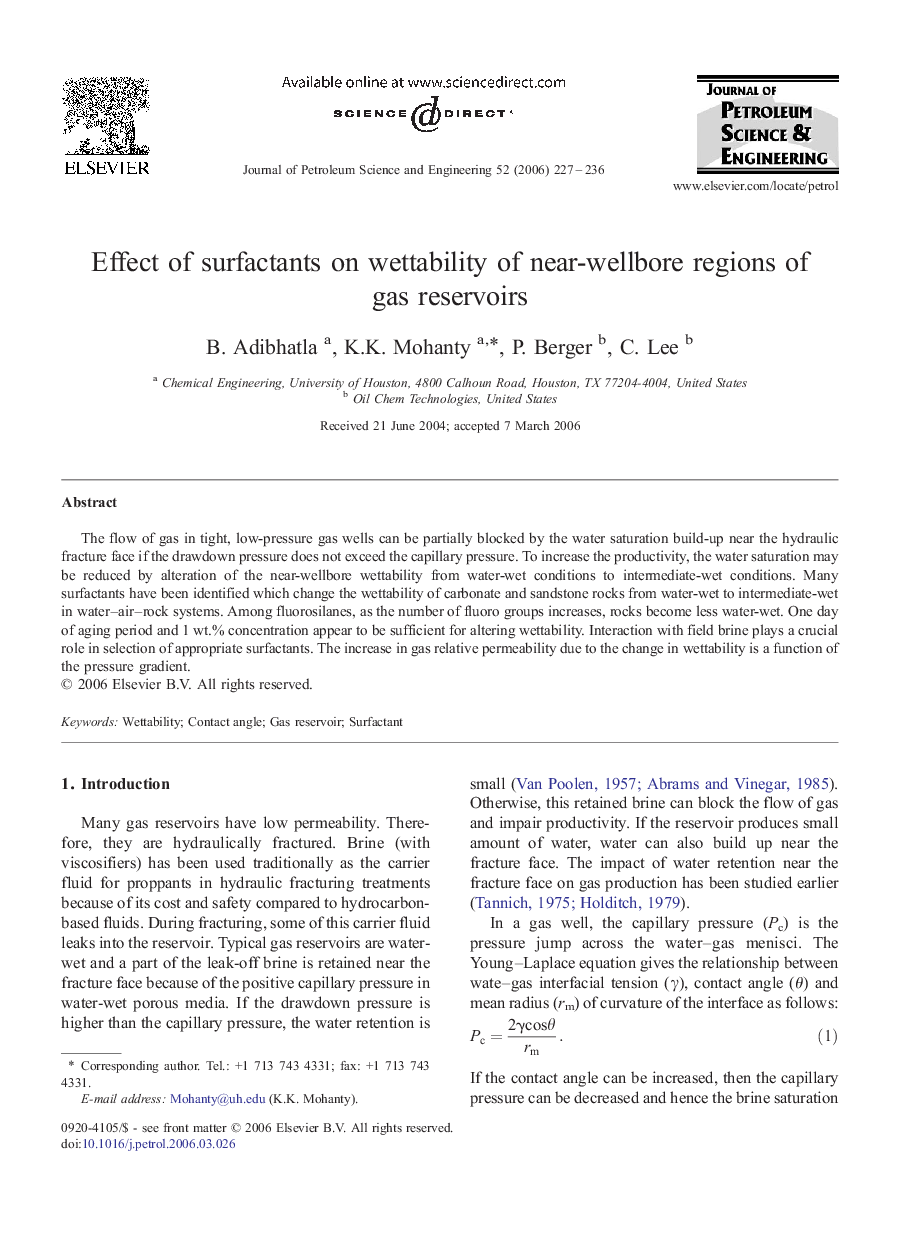| Article ID | Journal | Published Year | Pages | File Type |
|---|---|---|---|---|
| 1756472 | Journal of Petroleum Science and Engineering | 2006 | 10 Pages |
The flow of gas in tight, low-pressure gas wells can be partially blocked by the water saturation build-up near the hydraulic fracture face if the drawdown pressure does not exceed the capillary pressure. To increase the productivity, the water saturation may be reduced by alteration of the near-wellbore wettability from water-wet conditions to intermediate-wet conditions. Many surfactants have been identified which change the wettability of carbonate and sandstone rocks from water-wet to intermediate-wet in water–air–rock systems. Among fluorosilanes, as the number of fluoro groups increases, rocks become less water-wet. One day of aging period and 1 wt.% concentration appear to be sufficient for altering wettability. Interaction with field brine plays a crucial role in selection of appropriate surfactants. The increase in gas relative permeability due to the change in wettability is a function of the pressure gradient.
